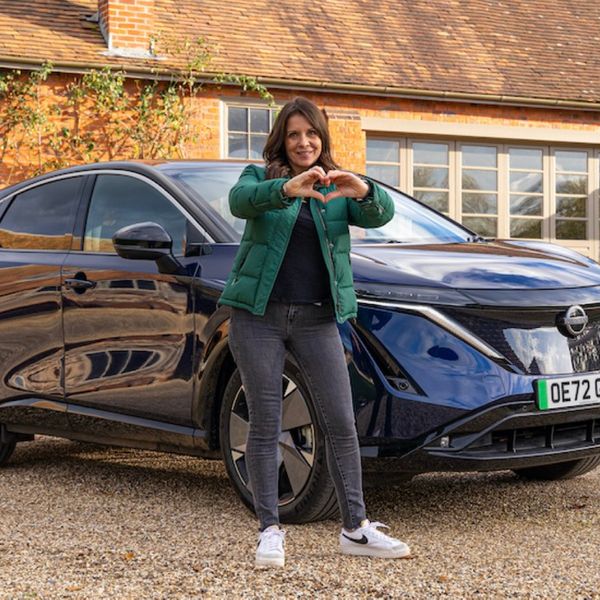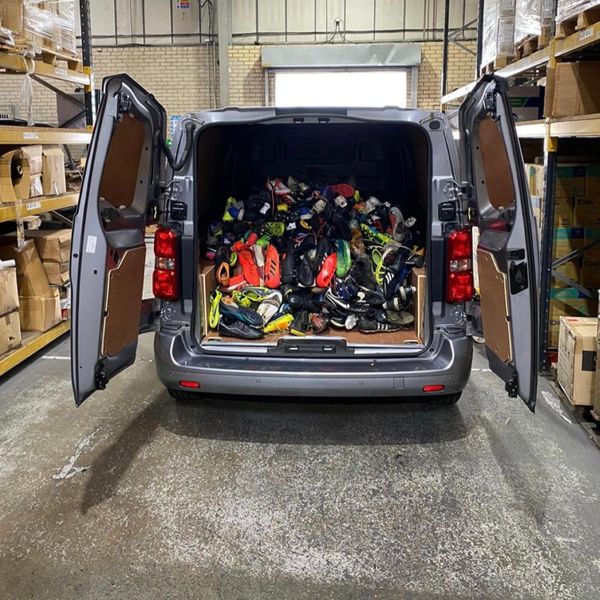We love to moan about the weather here in Britain. It’s usually the first thing we talk about when we meet. We complain that it's either too hot or too cold, the nights are too long or we can’t get to sleep as it’s too sweaty. And then there’s the rain. Always the rain….
It’s not just those of us out in the elements that don’t like the extremes of the weather – your electric car won’t be a big fan of it either. While we like to focus on the benefits of switching to electric power here at Electrifying, not even we can put a positive spin on the fact that really cold - or indeed, really hot - weather can take rather a big chunk out of your driving range.
But there are ways to manage the effect the weather has on your car – and some tricks which will actually make you realise electric cars can be much cosier than a petrol or diesel! Here are our top tips for eking out every bit of energy your battery pack can muster, and keep it in tip-top condition too.
Q: What will happen to my battery in cold weather?
A: The most important part of your electric car is the bit you can’t see - the battery. Like all of us, battery packs do their best work when they’re not too hot, and not too cold.
Electric car batteries are built from lithium-ion cells. When the weather is cold, the chemical reactions are slower and the pack loses its charge faster. If you’ve ever tried to use a smartphone on a really cold morning, you’ll know what we are talking about.
Q: Is there anything I can do to help the battery when it is chilly?
The best way to make sure your electric car is at an ideal operating temperature is to use something called preconditioning. This draws power from your wall charger to warm both the cabin and the battery pack before you drive away, so you are using mains power to do the heating. Preconditioning warms the battery pack and makes it ready to work at its full efficiency the moment you hit the accelerator.
Setting everything up will vary according to the make of car you have, but most electric cars have an app. Just set your departure time, hit send and the car will do the rest.
The second reason why preconditioning is such a great idea is because it makes the cabin warm before you’ve even set off. It also works if the weather is hot; if you have been in the office all day and the car is parked in the sun, set the preconditioning and the car will get it down to a bearable temperature inside using the air conditioning even when you’re sitting at your desk. Otherwise you’ll be using a lot of power from the battery just to get the cabin comfortable, and energy used by the heating or air con is energy you don’t have to drive the wheels.
The added bonus is that you’ll save all that time you used to spend scraping ice off your windows and waiting for the car to get warm. The car simply does it while you are eating breakfast, or hitting the snooze button one last time.
![Tesla Model S app iPhone]() Warm your car using an app, so you can drink more coffee
Warm your car using an app, so you can drink more coffee Q: Does using the heater (or air con) use a lot of battery power?
A: Ineivitably, yes it does. With petrol or diesel power, keeping warm inside is pretty easy. The engine generates heat which is easily piped into the living quarters. With electric cars, the batteries and motors are so efficient that they don’t generate a lot of heat. Certainly not enough to keep you warm on a cold morning.
Using the car’s heater is a pretty inefficient use of your electricity. If you think about it, you don’t get many battery-operated heaters to use around the home as it’d take an awful lot of AAs to warm anything. Some cars have a heat pump fitted, which is much more efficient at creating heat, so if you are worried about your range or live somewhere which is often chilly (such as the Highlands) then look out for cars which have one fitted,
Q: How can I save battery power without getting frostbite?
A: Our advice is to try and heat yourself rather than the empty space around you.
By this we mean you’re better off turning down the car’s main heater and cranking the heated seats and steering wheel up if you have them. Likewise, if you have a heated windscreen – use that rather than the blower to defrost.
Keeping an electric car cool inside in hot weather isn’t quite as big a task, as there is no heat-generating exhaust under the car or a big lump of metal burning stuff by your feet like there is in a petrol car. But the aircon still uses power, so don’t set the temperature so low that you need to wear a Puffa jacket in July.
Using the aircon might actually be more efficient than the drag caused by opening the windows though, especially if you’re driving at speed.
![]() Seek out the heated seat
Seek out the heated seat Q: My car mists up quickly in winter. Is there a way I can prevent this?
A: Condensation is cause by the moist air inside your car hitting the cold windows and forming droplets. So you need to find a way of keeping the glass dry and warmer. One way to do this is to use the air con - even in winter. This will dehumidify the interior and stop the droplets from forming.
But you can also help by putting damp items like boots and wet coats in the back of the car.
Also, think about the weight. Some people (Ginny) have as much junk in the back of their car as in their house. Maybe it’s on its way to the tip, post office, charity shop or there’s a bag full of kit just in case you get the urge to go back to the gym. But getting rid of all this is another clever way to maximise the range of your electric car.
Why? Well, like with any car, weight is king when it comes to getting the most from your power source. And that’s especially true in winter for an electric car when the battery is working flat out keeping you warm AND getting you from A to B.
Q: What driving mode should I use in winter?
A: Some electric cars will have specific drive modes for snow and ice which change the way the traction control reacts and maximise the grip. But it's not just these you should be using if you want to keep going for as long as possible in winter. Nearly all electric cars have some form of selector as standard. These allow you to alter the way in which your car uses the charge from its battery. In normal mode, you get maximum performance from the motor and can have as many gadgets and gizmos on the go as you like.
A lot of drivers will just leave the car in whatever mode it goes into when they hit the start button and never bother to change it. That’s fine of course, but if you want to maximise your range in winter, you’ll need to become something of a driving mode ninja.
Every car maker has a different name for the various modes on offer, but essentially they do the same thing. Usually, you’ll find that an eco or range setting will limit some of the functions of the heating system and whack the brake re-generation up to max. If it doesn’t do that automatically, make sure you get that button pressed for maximum energy recuperation - it’s worth it.
Most will also limit the pulling power of the motor to prevent you frittering away your charge with too many Grand Prix starts. This can be especially useful in wet or wintery conditions, as the instant power you’ll get from an electric motor can cause some scrabbly wheels when pulling away when its slippery.
Some cars go even further with what’s known in the business as an Apollo 13 setting. This will switch off all but the essential kit on your car, so while you’ll still have important stuff like lights and windscreen wipers, the heating will be switched off and you’ll be limited to a fairly low top speed. You may get to your destination with mild frostbite, but at least you’ll have made it.
![]() Apollo 13 mode can be a bit chilly
Apollo 13 mode can be a bit chilly Q: What other ways are there to save energy in winter?
1) Plot your route
Winter driving in an electric car is all about efficiency. It might sound a bit nerdy, but to get the most out of your car when the thermometer drops, you’ll need to look at every part of your journey.
If it makes the difference between getting home or having to do what’s known as a splash and dash at a rapid charger, your geeky attention to detail will pay extra dividends in extreme weather.
Route planning might sound like something only a scout would find fascinating, but believe us - it’s something we reckon a lot of electric car owners swear by.
Let’s say we’re going from Weymouth to Oxford and we ask Google maps to plot us a route. The fastest route is 161 miles and takes two hours and 40 minutes. Now the trick here is to look at the alternatives it offers you because the mapping software assumes that you’ll want to go on a motorway and that you’ll doing 70mph all the way. A second route will take around the same amount of time but is 44 miles shorter. Plus most of it is on 60mph roads - and they will take far less out of your battery pack than the motorway will.
So choose that route, see a bit of the British countryside and hopefully arrive without the need for a recharging stop. Oh, and don’t forget if you drive a plug-in hybrid to use your sat-nav, even on regular or often-used journeys - most have a neat little bit of software that works out the most efficient way of using the available battery power. But only if you can tell it where it’s going!
![BMW X5 xDrive45e]() Some electric cars will work out the most efficient route. Way to go!
Some electric cars will work out the most efficient route. Way to go! 2) Wrap it up
Now this one won’t save you any power, but it will make life a little bit easier for you. When you plug in, park as close as you can to the charger and use a velcro wrap to keep the cable neat and off the floor - if it is safe and you can do it without causing a trip hazard.
It will mean that your cable won’t be dangling in the puddles and getting covered in grime. You don’t want to be dribbling gutter juice on your clothes!
3) Under pressure?
When’s the last time you checked your tyre pressures? In warm weather the air in your tyres expands and the pressure reading will be higher. In cold weather the opposite happens, and under inflated tyres sap power from the motor – just imagine trying to kick a flat football around – it won’t go nearly as far down the pitch as on which has been pumped up.
So invest in a decent gauge and check the pressures. The recommended figures will be on a little sticker in the car, usually around the driver’s door frame or inside the charging flap. If all else fails – ask the internet or have a look in the manual.
4) Prepare for the worst
Even the best maintenance won’t prevent a mishap such as a puncture, so be prepared. A warning triangle and a high-vis vest, plus something to keep you warm and dry could literally be lifesavers if you breakdown. You can get breakdown cover to help you out, should you need it. You can get it from Green Flag, or another provider and you can even save the number into your phone to save time too.
Those are our top tips for surviving an Electrifying winter. Do you have more to share? Please let us know!
















